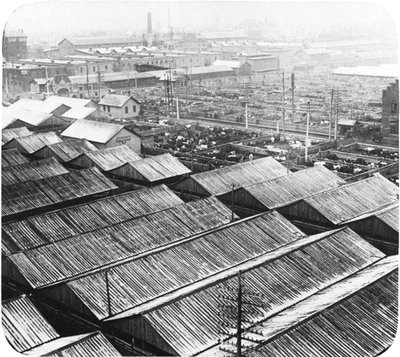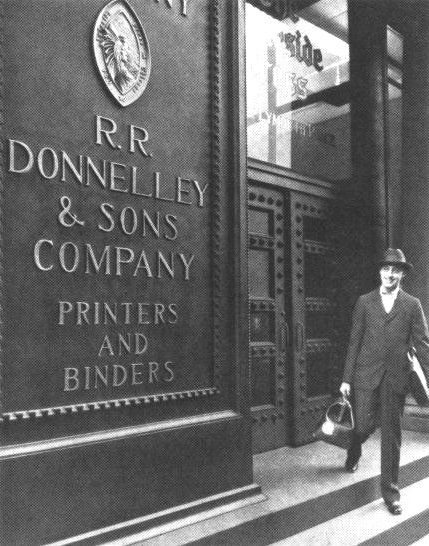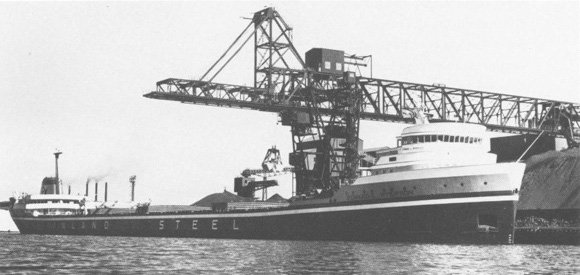Industrialists

The central stock yard created in 1865 covered 345 swampy acres on the South Side, and included 2300 separate livestock pens as well as hotels, saloons, restaurants, and offices for merchants and brokers.
Meat packer Gustavus F. Swift subscribed $1000 for the new University of Chicago in 1890.
But his most important legacy to the University was certainly his son Harold, who graduated with a PhB in 1907 and became one of the University's most devoted alumni. Chairman of the Board of Trustees from 1922 to 1949, Harold Swift may have spent as much time with University affairs as he did with the family business.
Other meat packers aided the University, including Sidney Kent, an original incorporator of the Union Stock Yards, and Charles Hutchinson, whose father was a partner with Kent in the Chicago Packing and Provision Company. Philip D. Armour, who arrived in Chicago the same year as Gustavus Swift, invested in the Armour Institute of Technology, which later became the Illinois Institute of Technology. Although the two schools discussed affiliating at several different times, the Armour family preferred to keep their school independent. They did provide for the University in other ways, including the Armour Clinical Research Laboratory in the hospital complex.
Benefactors of the University included manufacturers of lumber, steel, railroad freight cars, steam radiators, farm machinery, electrical equipment, and paper products. Silas R. Cobb, a harness maker who arrived in Chicago in 1833, made enough money to retire in 1852 at the age of 60, and although somewhat intimidating to the University's campaign solicitors, was happy to contribute funds for the University's first lecture hall. Cyrus Hall McCormick, who made Chicago a center for farm implement manufacturing, died before the University opened, but several family members took an active interest in it, including his daughter, Anita McCormick Blame, who funded the Chicago Institute, which was to become part of the University's College of Education, and her brother Harold, who served as a trustee for many years.
La Verne Noyes was an inventor of farm machinery and also developed a wind-driven motor which could generate electricity. President of the Civic Federation of Chicago, trustee of the Lewis Institute, life-member of the Art Institute, and president of the trustees of the Chicago Academy of Sciences, he donated money for a women's building at the University of Chicago as a memorial to his wife, Ida Noyes, who died in 1912.
Chicago's steel industry was represented at the University by Edward L. Ryerson, grandson of a hardware and steel merchandiser who came to Chicago in 1842. Ryerson served as chairman of Joseph T. Ryerson and Son and later of Inland Steel after the two companies merged; he was chairman of the University's Board of Trustees from 1953 to 1956, and also served for some years as president of the Orchestral Association.

The University's relations with one of Chicago's foremost printing establishments began when R. R. Donnelley became treasurer of the University Press in 1892. His son Thomas served as a trustee and consulted on matters concerning the Press, and grandson Gaylord continued the family tradition as chairman of the Board of Trustees from 1970 to 1976. Photograph courtesy of R. R. Donnelley & Sons Company.

